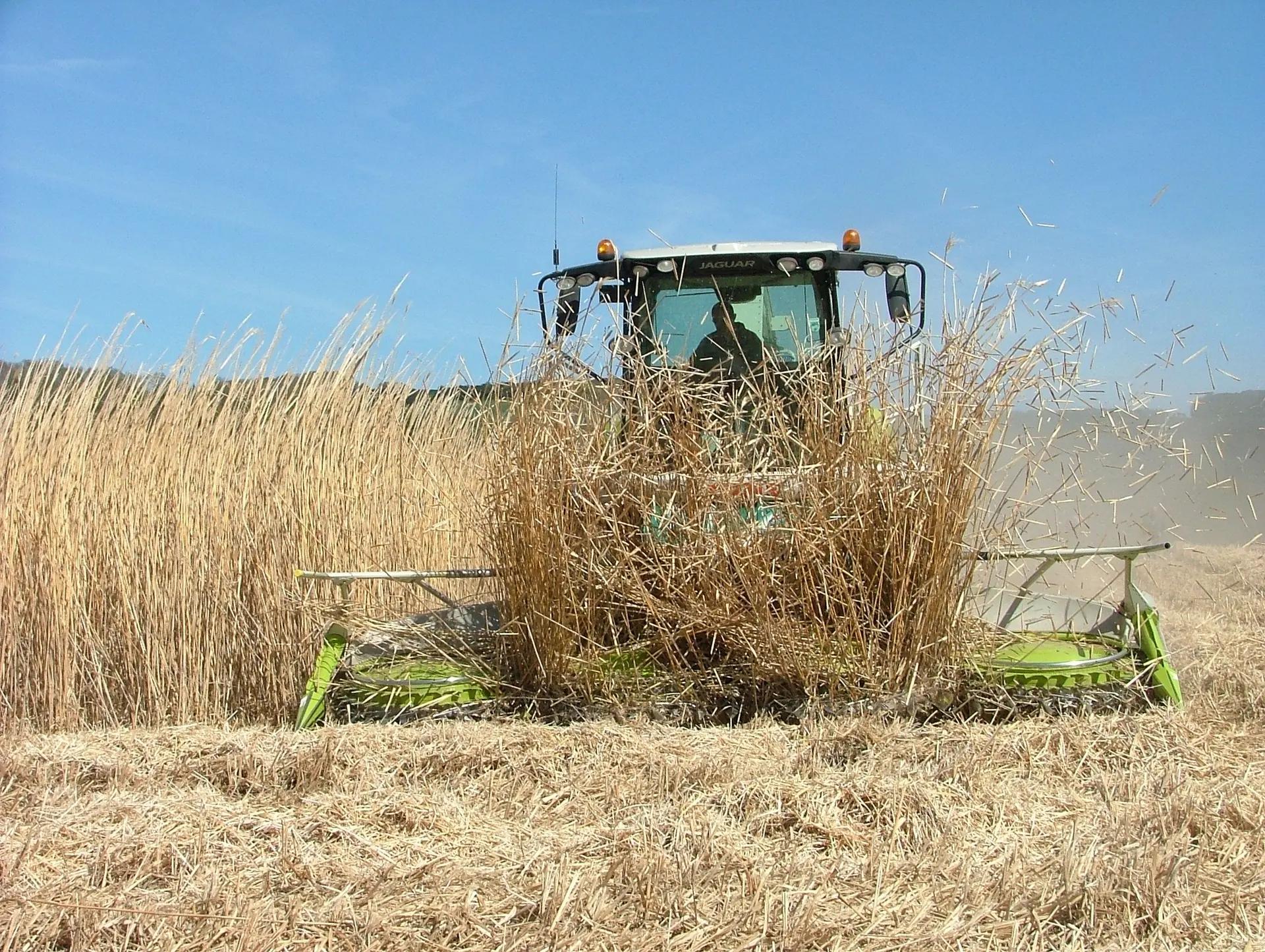Miscanthus is a woody rhizomatous C4 grass species which originated in SE Asia and was initially imported to Europe as an ornamental plant. It utilises the C4 photosynthetic pathway in contrast to the C3 pathway utilised by standard arable crops in Northern Europe (such as wheat, oilseed rape potatoes).
Strengths
- Harvested annually
- Limited pests and disease
- Uses conventional agricultural machinery
- Lower moisture content when harvested
- Annual harvests provide better cash flow
Weaknesses
- Monoculture
- Currently planted using rhizomes which requires large volumes of material per hectare.
- Higher establishment costs
- Low bulk density so takes up lots of storage space.
- More limited boiler selection
- Does not respond to N fertilizer
- Poorer overall wildlife value than SRC but does provide a good roosting habitat
HeightTallest height: 4 metres
It grows to 3-4m in height and the stems and leaves can be harvested annually
Ideal Soil typeSandy to clay
- Miscanthus grasses are easy to grow in a wide range of soils, from sandy to well-drained clay.
- They prefer a moist but well-drained soil while establishing themselves, however will tolerate periods of dry soil when established.
PersistenceUpto 20 years
It is a perennial plant with an estimated productive life of around 20 years but yields can start to fall off from the mid teens onwards.
Crop RiskLow risk
Miscanthus is an easy plants to grow, tolerating different soils, requiring no fertiliser and being fully hardy.
Use of cropMulti-use
- Biomass fuel
- Animal bedding
- Biocomposites
- Bio packaging,
- Insulation
- Game cover
How it's plantedSpring - early summer
Usually with rhizomes with a bespoke planting machine although new technique using Ceeds™ and seeds are being developed. Typical stocking rate is 20,000 plants per hectare.











Find out potential yield on this crop